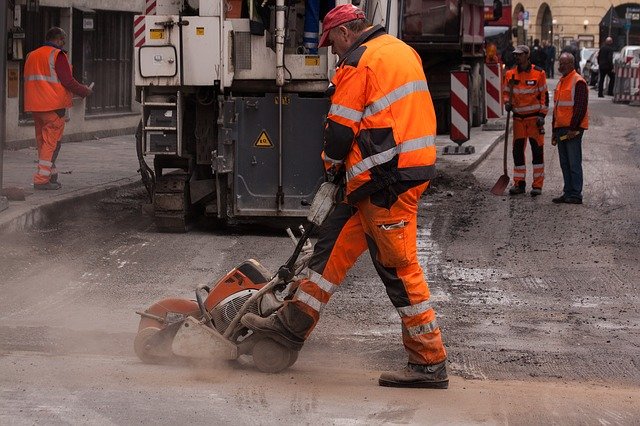The changing demographic of construction
 By Mark Paterson, senior risk manager, QBE
By Mark Paterson, senior risk manager, QBE
Construction accounts for 6 per cent of the UK economy and remains the most dangerous land based work sector. Its output is expected to steadily rise over the next five years but this post-recession turnaround is posing a new set of health and safety threats.
The industry is struggling to address a shortage of skills, indeed research recently completed by QBE among the construction sector revealed that almost 7 in 10 firms plan to recruit additional skilled staff in the next 12 months but half are concerned about the availability of this talent. The on-site demographic is changing as a result; there are considerably more older workers and a marked increase in foreign labourers. This poses additional health and safety challenges that many firms are failing to get to grips with.
The changing demographic of the construction site
According to 2013 ONS figures, 35,000 construction workers are aged 55 and over. Construction work can be very physically demanding. Heavy workloads combined with the normal effects of ageing can lead to premature physical decline but retaining experienced workers for longer can be hugely beneficial for firms, certainly if their skills are capitalised upon by placing them on more skilled but less physically demanding work and also creating roles for them to train younger works in safe working practices.
With a lack of young UK nationals being trained to replace those older workers who are retiring, the sector is increasingly reliant on both skilled and unskilled workers from overseas. Employing foreign workers can present its own challenges, notable among which is the language barrier. Firms need to take a proactive approach to managing this now. They need to carry out site audits to establish English language capability and decide whether or not to enforce a minimum level of English requirement for all workers. Clear communication is critical, firms need to identify practical solutions to ensuring all workers fully understand safety practices, for example relying on imagery to communicate safety requirements as opposed to text.
A false state of security
The shape of health and safety in the sector appears to be grossly overestimated with Construction unions reckoning that 80% of workplace accidents are unreported and that only 9 per cent of minor accidents are ever reported. This paints an unrealistic picture that all is well in the sector and, worse, puts workers at risk. If it is not reported, it can’t be prevented and what was a minor accident to one worker could easily become a major incident for another.
Clear whistleblowing policies that are developed collaboratively with workers and actively promoted and enforced by management will go a long way to addressing negative behaviours on site.
The other side of the coin
There have been valiant efforts over the years to improve on-site safety in the sector, notwithstanding firms struggles to address the new challenges outlined above, but often threats to workers’ health have played second fiddle.
The ‘No Time to Lose’ campaign, launched by the Institution of Occupational Safety and Health (IOSH) last year, highlighted the staggeringly high number of occupation-related cancer deaths in the UK.
Some industries are more susceptible than others, and certain working patterns have graver consequences. The prevalence of harmful dust, such as silica or asbestos, and the use of hazardous materials put the construction sector in a high risk category. Last year, for every one accident-related fatality, 100 construction workers died from a work-related cancer.
The measures needed to minimise the risks are often relatively easy to implement and there is no reason why all UK employers, with a cancer related exposure, should not take due precautions and following the hierarchy of hazard control is an excellent place to start.
- Eliminate – redesign the work so that the hazard is removed completely
- Substitute –change the high-risk product to one that doesn’t produce a hazard e.g. replacing lead based paint with acrylic paint.
- Engineering controls – install or use additional machinery, such as local exhaust ventilation, to control risks from dust or fumes. Order materials to size, to reduce the need for cutting on-site.
- Administrative controls – identify and implement procedures to enable safe working e.g. use job rotation to reduce the time workers are exposed to hazardous substances, perform risk assessments, increase safety signage and provide awareness training.
- Protective clothing and equipment – as a last resort and only to be considered after all previous measures have been exhausted. Ensure personal protective equipment (PPE) is individually fitted and workers are trained in the function and limitation of each item of PPE.
The consequences of poor occupational health standards can be grievous. By taking simple precautions, providing appropriate training and ensuring health and safety policies are consistently enforced, lives will be saved. What employer doesn’t want that?
For more information on health and safety challenges for the construction sector, download QBE’s Protecting Employees on site guide.
Mark Paterson is senior risk manager for QBE
The changing demographic of construction
By Mark Paterson, senior risk manager, QBE Construction accounts for 6 per cent of the UK economy and remains the
Safety & Health Practitioner
SHP - Health and Safety News, Legislation, PPE, CPD and Resources Related Topics
Inclusivity in PPE: The manufacturer’s perspective
Future-proofing safety: Five trends shaping the PPE landscape of tomorrow
Workers facing uncertain future coupled with health and safety risks, new IOSH report says

